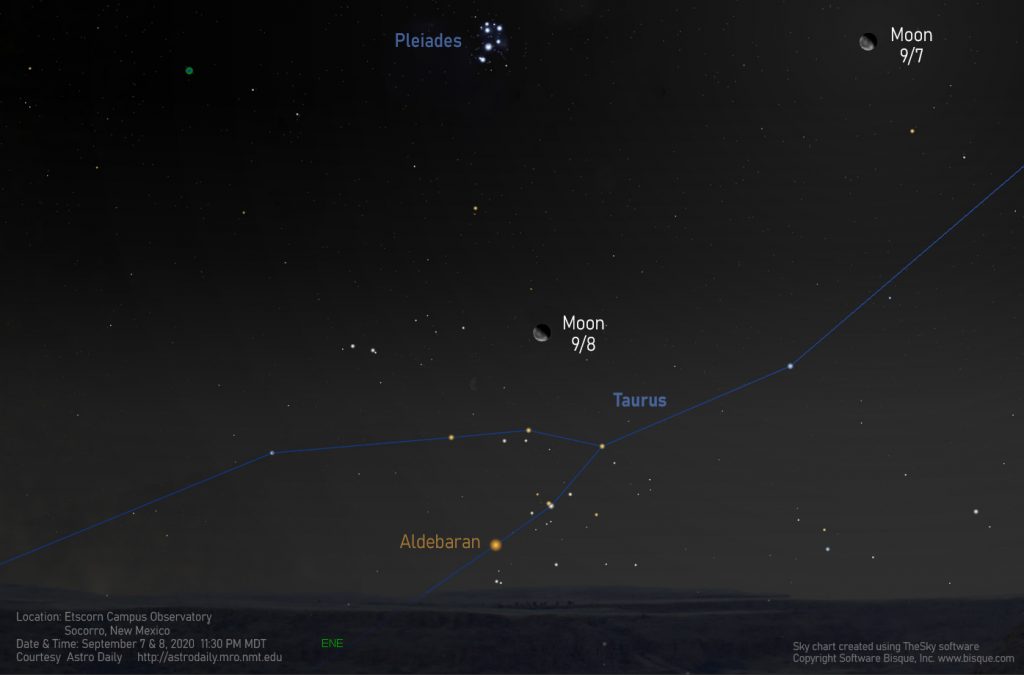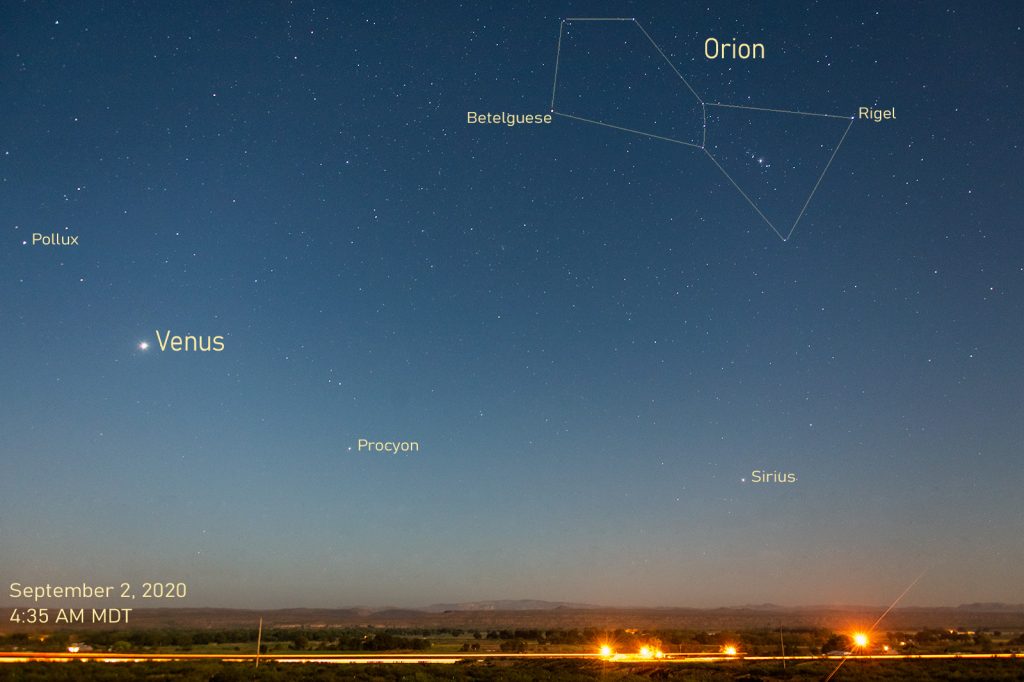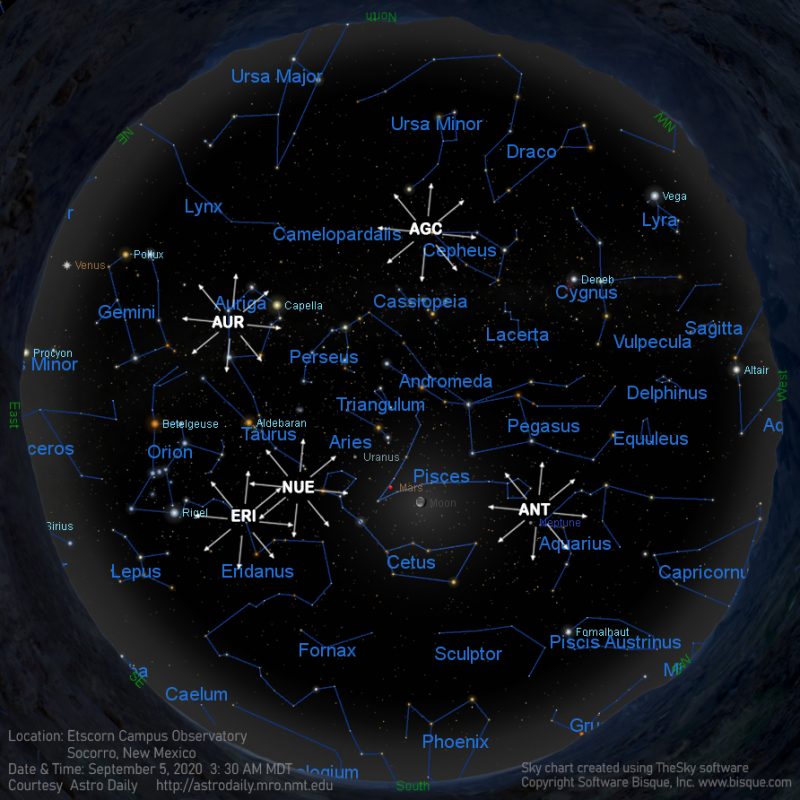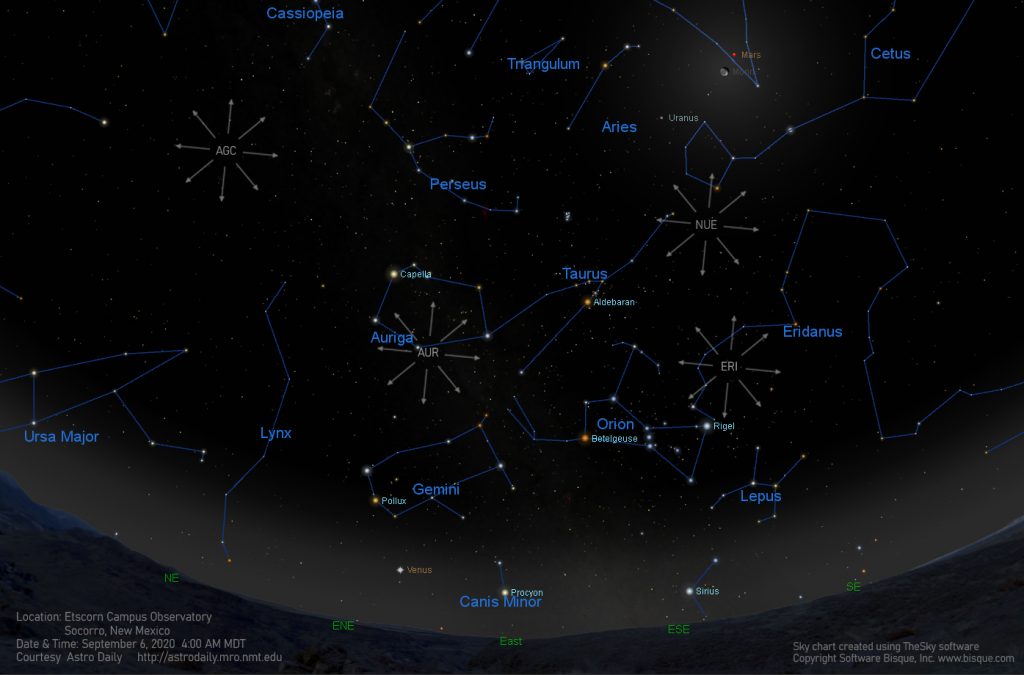I don’t know about you, but I’m really looking forward to the upcoming long holiday weekend. What better way to celebrate the economic achievements of the American worker than by taking a day off from work? Even though I’m comfortably working from home (in the dark with my cats close by, wearing stretchy clothes because all manner of food and drink are just a room away) and I love my job as Assistant Director of Outreach and Communications for the Magdalena Ridge Observatory, it will be nice to have an extra day away from Zoom meetings, emails, and hours of research and writing. Of course I don’t plan to forsake work completely; the weather forecast is good for my area here in central New Mexico, and I plan to get out of town to an even darker sky site than Socorro to do some wide field astrophotography and maybe shoot some time lapse video. Observing and photographing the sky, day or night, is as much pleasure as it is work. Did I mention I love my job?
If you read Jon Spargo’s September Skies article earlier this week, you know we have a few visual treats in store for us this month, with a close encounter happening this very weekend. On Saturday night, the Moon will pass by Mars, getting as close as a half-degree; a half-degree is about the width of the full Moon. The Moon and Mars will both have risen above the eastern horizon by 11pm on Saturday, and will be visible until dawn. The earlier you observe this pair the better; as the Moon orbits the Earth it is steadily moving away from Mars’ location in the sky. Over the next several days the Moon moves between the Pleiades and Taurus as it continues its journey through the sky. Look to the east close to midnight, as illustrated in the chart below. On Tuesday night the waning gibbous Moon will be about 5° above Aldebaran, the eye of the bull, and about 8° below the seven sisters, the Pleiades.

Other things to look for are the planets Saturn and Jupiter, visible high in the southern sky after sunset. As Jon says, this is a great time to break out your binoculars and telescopes and look for features in the clouds of these two gas giants. While you’re at it, see how many of Saturn’s rings you can pick out, and try to notice Io’s change in position over the course of the night due to its speedy orbit around its parent planet Jupiter.
For those of you who are up before the dawn, look to the east to see the planet Venus. Even though it is surrounded by bright stars such as Betelgeuse, Rigel, and the brightest of them all, Sirius, Venus is still the brightest object you’ll see in this part of the sky.

There are five minor annual meteor showers currently in progress: the Anthelions (ANT), the August gamma Cepheids (AGC), the nu Eridanids (NUE), the eta Eridands (ERI), and the Aurigids (AUR). Although none of these showers are at their peak, you may observe a few meteors. According to the American Meteor Society, at mid-northern latitudes one can expect to see about three meteors per hour in the evening, and up to nine per hour in the early AM from these showers. The chart below shows the radiant (the point from which the meteors appear to originate) of all five showers in the early morning.

If you do go meteor hunting, you can also expect to see a few sporadics, meteors which are not associated with an annual shower. In the evening you may see one or two an hour; in the early morning, as many as six per hour. With a combined total count of 15 per hour, the early morning is the best time to go hunting. The chart below shows the radiants of four of the five minor showers looking east in the early AM. While watching that Moon/Mars close encounter and enjoying the view of Orion, one of the most distinctive constellations in the sky, you just might catch sight of a few meteors. For more information on these and other meteor showers, follow this link.

I hope this gives you an idea of what to look for if you get a chance to spend some time under the canopy of stars over the next few days. I’ll be reporting my night sky finds next week upon my return. Happy observing!
M. Colleen Gino, MRO Assistant Director of Outreach and Communications
